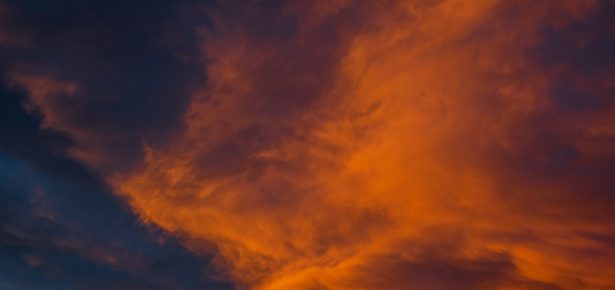
In Australia, something (or other) is in the air. The worst bushfire season on record has been succeeded by COVID-19. Iconic beaches were eerily empty during the Easter holiday period, being part of the extended lockdown restrictions. Many in the south-eastern parts of the country are suffering first from drought, then from bushfire, and finally from the loss of tourism which might have boosted their economic recovery. Food charities record being pushed to the limit. While the government has persistently stalled in recognising the effects of climate change, it quickly sprang into action to mitigate the impact of COVID-19 on the health of its citizens and the national economy. While the bushfires and COVID-19 are upmost in the national consciousness, bleaching of the Great Barrier Reef has occurred for the third time in five years. There is celebration when rivers like the Murray and the Darling begin to temporarily flow and join. COVID-19 has underscored the interconnectedness between the human and more-than-human and the need to consider our responsibilities of belonging within a larger ecology.
First Nations writers have led this in Australia, understanding Country as a holistic system that includes Dreamings, humans, animals, plants, stone, earth, water and air. Just as Country itself is kin and nourishes, it too requires care and can become sick.[12] Narungga poet Natalie Harkin sees her work as “driven by notions of responsibility that…can be…cathartic-compelling, a way of processing [and] responding to unexpected triggers.”[13] Goenpul and Quandamooka scholar Aileen Moreton-Robinson defines relationality as experiencing “the self as part of others and that others are part of the self; this is learnt through reciprocity, obligation, coexistence, cooperation and social memory.”[14] Who and what is recognised illuminate the ways in we navigate belonging. While aid was given to fire and drought-impacted regions, government initiatives in light of COVID-19 did not extend to international students. Reports of increased racial harassment have reinforced a sense of xenophobia yet are countered by stories of kindness. Sometimes larger forces can seem too overwhelming or our agency too limited by distance. Having just spent summer in a city cloaked with the drift of smoke, I now watch the trauma unfurling abroad and think of the vulnerability of those closer to home or Australian elders in remote communities. From her Adelaide suburban backyard, Harkin registers how “smoke whispers sorrow on autumn winds/while distant strangers cling/ to homes lands boats/ watching livelihoods/ watching lives/ slip away”.[15]
Poetry might work out of a space of absence and precarity, approach the unspeakable, or find energy from the uncertain. Essentially an art of air, the reading of a poem is shaped through breath. It can cross thresholds in ways that might enable survival and renewal. I’m writing this on Anzac Day, an Anzac Day like none other in being commemorated together yet apart. At dawn, many stood at the end of their driveways to spend a minute’s silence in reflection. It seems an opportune time to think about different forms of loss and the necessity of remembering. How might the Anzacs’ focus on mateship be reconceptualised to acknowledge and mourn its cultural blindspots, listen and engage with the other, and undertake new forms of care? Echoing the minute’s reflection on Anzac Day, my university framed its initial response to COVID-19 as a ‘pause.’ Taking pause or a minute’s reflection provides an open moment to rethink the dynamic between people and nature, and to hold the present’s trace. Within this space, poetry is crucial as we face the challenges still yet to come.
Latest Comments
Have your say!